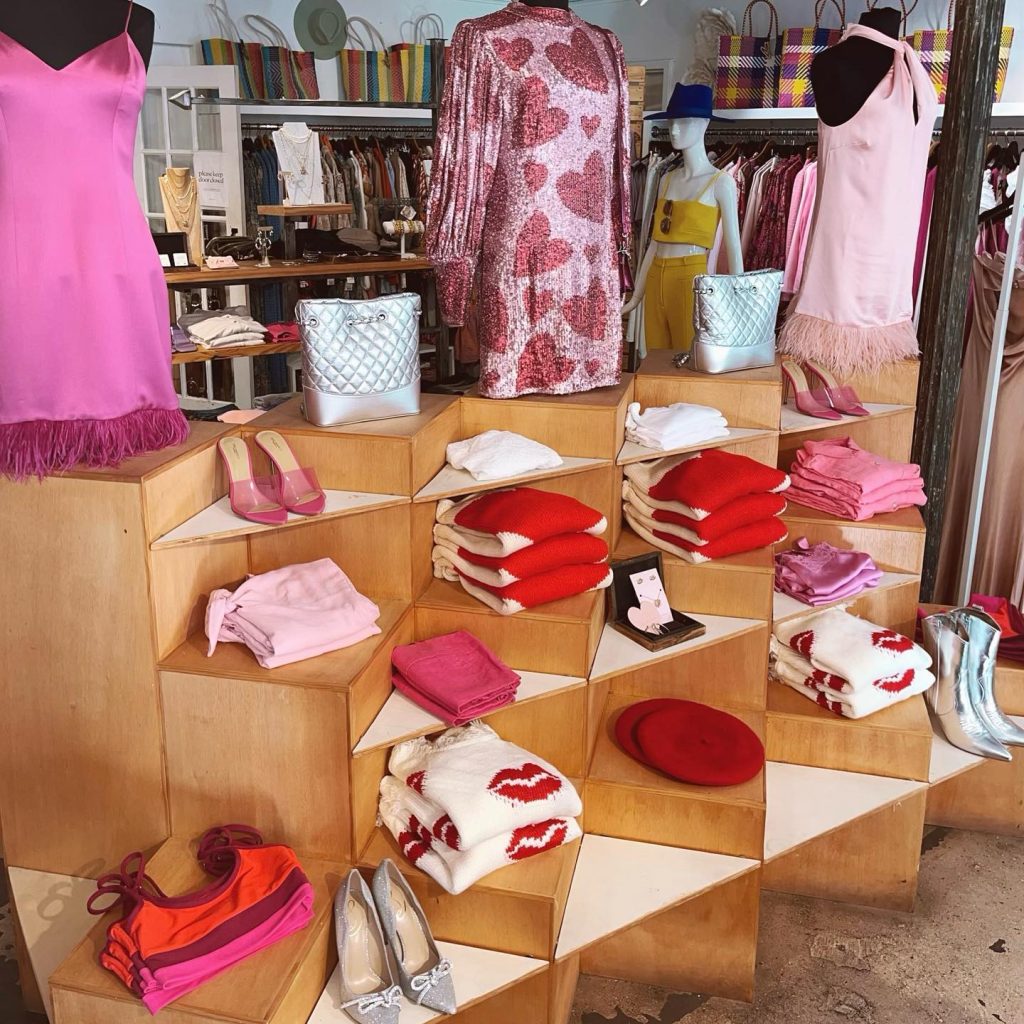A Novice's Overview to Browsing the Boutique Fashion Scene
Wiki Article
A Deep Study the World of High-Fashion Runways: Recognizing Clothing as Art
Developers, a lot like skillful artists, weave detailed stories through material, type, and color, challenging conventional standards and redefining beauty requirements. As we explore these sartorial spectacles, we must contemplate: what role does fashion play in shaping societal values, and just how does it reflect the ever-changing tapestry of human feeling and identification?The Development of Runway Reveals
The trajectory of runway programs has transformed dramatically over the decades, developing from unique industry occasions to fascinating eyeglasses that mix style with art. Commonly, path programs made love affairs, held in ateliers or tiny locations, primarily participated in by purchasers and market experts. These early presentations concentrated on the garments' craftsmanship and business viability, using a direct and sensible display screen of seasonal collections.As the fashion industry expanded, the nature of runway programs began to transform. The 1970s and 1980s marked a transforming factor, with developers looking for to identify themselves via more theatrical presentations.
Recently, technology and social media sites have actually better transformed runway shows, making them available to a worldwide audience. Livestreaming and digital platforms have democratized fashion, allowing fanatics worldwide to witness these occasions in real-time (boutique fashion). This advancement shows a wider cultural shift, where high-fashion runways function as a vibrant intersection of performance, technology, and design
Designers as Visionary Artists
How have designers transcended their functions to come to be visionary musicians? Designers in the high-fashion market have actually obscured the lines in between practical garment creation and the theoretical realm of art. This change is apparent in the way they approach their collections, not just as clothes but as extensive expressions of emotion, society, and identification. By accepting artistic techniques such as sculpture, painting, and progressive installations, developers craft garments that challenge traditional style norms and raise them to art forms.Visionary developers draw ideas from a myriad of resources, including abstract art, historical references, and personal narratives. They possess an unique ability to imagine and appear concepts that push the boundaries of traditional fashion, usually redefining aesthetic standards while doing so. This innovative resourcefulness is showcased through dramatic silhouettes, ingenious products, and detailed workmanship, which welcome viewers to experience fashion as more than just wearable products.
Additionally, the path works as a canvas for these musicians, where lighting, music, and set design coalesce to produce immersive experiences. These presentations are not just screens of apparel however are coordinated efficiencies that stimulate feeling and prompt idea, verifying the developer's function as a real artist in the modern cultural landscape.
Social Influences in vogue
Cultural tapestry weaves its intricate patterns right into the textile of style, affecting developers globally. The dynamic interchange of cultural tales, traditions, and icons informs and inspires collections that poise high-fashion paths. Developers meticulously draw from their heritage or involve with societies distinct from their own, crafting garments that work as visual narratives. This social discussion not only enriches the aesthetic variety however also promotes a deeper understanding and gratitude of worldwide identities.The influence of culture on fashion is frequently seen in the reinterpretation of standard garments and patterns. The usage of Japanese kimonos, Indian saris, or African prints in contemporary fashion mirrors a blend of cultural authenticity and modern appearances. Developers such as Valentino's Pierpaolo Piccioli and Alexander McQueen's Sarah Burton have actually been recognized to incorporate abundant cultural motifs into their couture collections, equating history into wearable art.

Innovation in Material and Layout
hop over to here Technology in textile and layout continually reshapes the landscape of high-fashion, pressing limits and redefining possibilities. In the last few years, technological innovations have substantially added to this advancement, introducing products that challenge traditional assumptions. Textiles ingrained with clever fibers, with the ability of altering shade or controling temperature level, are no much longer confined to the world of science fiction. Designers are progressively his comment is here checking out the integration of innovation, such as 3D printing, which permits the development of complex structures that were formerly unbelievable.The fashion sector is seeing a surge in the usage of green materials, acquired from recycled plastics, natural fibers, and also biodegradable parts. Developers are accepting these materials to craft garments that are both visually striking and mindful of their environmental footprint.
In terms of layout, experimental kinds and avant-garde silhouettes are constantly transforming the path. By including advanced techniques and unique products, designers cultivate garments that blur the line between fashion and art, setting new requirements for creative thinking and expression in the high-fashion sphere.
Effect of Style on Culture
Fashion wields a profound influence on society, serving as both a reflection of cultural identification and a stimulant for social modification (boutique fashion). Via its development, fashion has actually mirrored societal changes, encapsulating the zeitgeist of numerous ages.Additionally, fashion has the power to bridge social spaces, cultivating understanding and recognition among varied groups. As globalisation increases, the cross-cultural exchange of fashion concepts ends up being significantly substantial, advertising inclusivity and diversity. The surge of streetwear, stemming from metropolitan subcultures, illustrates exactly how fashion can go beyond socio-economic borders, providing individuals a method of self-expression and empowerment.
Basically, style is not just concerning looks; it is a vibrant force that affects values, perspectives, and societal development (boutique fashion). By continuously interacting with social and cultural currents, style stays an important part of the collective human experience

Conclusion
Developers, akin to visionary artists, coordinate collections that show identity, feeling, and social narratives, challenging typical visual appeals. This intersection of style and creativity not only captivates target markets around the world but also affects societal perceptions and advertises a much deeper admiration for social diversity.
Social tapestry weaves its detailed patterns into the material of style, influencing designers internationally.Style wields a profound impact on culture, serving as both a representation of cultural identification and a catalyst for social adjustment.
Report this wiki page